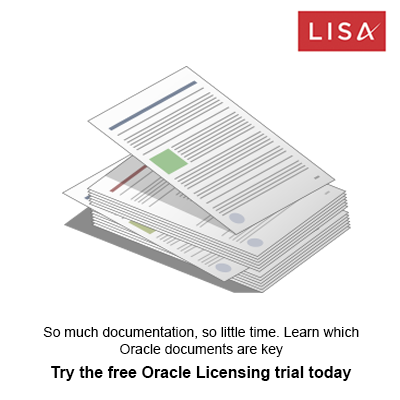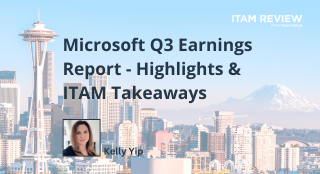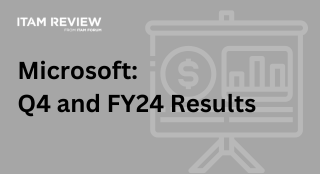Can we deploy Oracle in the cloud?
 The question of deploying Oracle databases to the cloud has started to come up more frequently among our clients and with good reason. Amazon and Microsoft have slashed the costs of deploying a virtual server, which makes it more appealing for IT departments to consider pushing applications into the cloud. While it is a common practice to deploy pre-production (development and QA) environments into the cloud there has been a hesitation in deployment of production environments especially where Oracle products are in the technology stack.
The question of deploying Oracle databases to the cloud has started to come up more frequently among our clients and with good reason. Amazon and Microsoft have slashed the costs of deploying a virtual server, which makes it more appealing for IT departments to consider pushing applications into the cloud. While it is a common practice to deploy pre-production (development and QA) environments into the cloud there has been a hesitation in deployment of production environments especially where Oracle products are in the technology stack.
The challenge has always been that Oracle has been reluctant to recognize the partitioning methods (how a physical server is divided into virtual servers) of other vendors. Oracle products are licensed on the number of physical cores on the physical server as oppose to the virtual machine. This makes it expensive to license the products on a shared architecture.
This was, of course, a sales strategy to encourage the adoption of Oracle Virtual Machine (OVM), SuperCluster and of course Oracle Cloud on which Oracle does recognize the partitioning methods. This strict interpretation of partitioning resulted in other vendors gaining a significant advantage especially as organizations start to move into the cloud and Oracle has now started to recognize what it calls an “Authorized Cloud Environment”.
So what’s an Authorized Cloud Environment for Oracle purposes?
- An Amazon Web Service Elastic Cloud (EC2) or Simple Storage Service (S3)
- Microsoft Windows Azure Platform
- An environment complying with Oracle hard partitioning guidelines
In simple terms, rather than insisting that all the physical cores of the underlying hardware are counted for licensing, only the cores available to the virtual machine are counted. From a deployment perspective there is no difference other than the server will have an IP address outside the organizations normal range.
 Licensing
Licensing
The licensing model remains consistent to deploying on a physical server with a virtual core equivalent to a physical core. Each 4 cores (rounded up) is equivalent to a physical socket.
The restrictions that apply to licensing Oracle Standard Edition (SE) and Standard Edition One (SE1) equally apply in the cloud, so you are limited to 16 virtual cores for SE and 8 virtual cores for SE1
There is a pay-as-you-go option built into the monthly fee, similar to Oracle Cloud. You also have the bring-your-own-license (BYOL) option available. For organizations on an Unlimited License Agreement the BYOL option is not available nor can it be used to increase your core counts when it comes to ULA certification.
Oracle Core Factor
Core factor is a weighting given by Oracle to reflect that certain models of CPU are slower than others. It is also used to encourage the purchase of their hardware. The core factor given to virtual cores in AWS or Azure is 0.5. Which means for a 4 core virtual server you need 2 cores of license. Before you get too excited about the potential cost saving a core factor of 0.5 gives you it should be noted that the typical cloud infrastructure is designed around having many lower powered physical servers and the core factor reflects this.
Oracle regularly review their core factors tables across all platforms so it should be assumed that this will apply to the AWS and Azure offerings in the future also.
Support
Oracle Support policy for virtualized environments remains consistent whether it’s in the cloud or on premises
“Oracle will provide support for issues that are known to occur on the native OS, or can be demonstrated not to be a result of running on the server virtualization software”
In other words, no support unless you can demonstrate the issue on a physical server or their supported platforms.
License Compliance
The main compliance issues organizations need to be careful of when deploying Oracle products to the cloud are:
- Ensure you are deploying to an Authorized Cloud Environment
- Conform specific Oracle products you are using are approved by Oracle for cloud deployment
- Check you are not breaching the core count limits for SE and SE1
- Use appropriate license where you BYOL?
- If you are using NUP licenses, check they are not multiplexed which is common for cloud based applications.
- Update your SAM processes to manage the elasticity of servers in the cloud and their associated licenses?
Contracts
In any conversation about licensing but in particular Oracle licensing none of the product documentation is contractually binding. So if you are considering a move to the cloud get advice from your Oracle Account Manager and an independent license consultant. Also make sure you record in a new contract any advice or clarification you get, including use cases. Do not assume the standard contracts cover your particular deployment.
Conclusion
There is no doubt that running Oracle products in the cloud opens up new opportunities for organizations and with appropriate processes and monitoring there can be significant cost reductions. There will also be new demands on SAM professionals, most notably around elasticity and chargeback and we can expect many changes as Oracle in the cloud matures as a service.
Reference
- Licensing Oracle Software in the Cloud Computing Environment
- Oracle in the Amazon Web Services Cloud
- Oracle and Amazon Web Services
- RDBMS in the Cloud: Oracle Database on AWS
- Virtual Machines Pricing Details
- Ten Questions to Ask Your Cloud Vendor Before Entering the Cloud
Can’t find what you’re looking for?
More from ITAM News & Analysis
-
The Allure of the Cloud: What are We Chasing?
When I ask ITAM professionals about their transition to the cloud, the responses are often similar. “It wasn’t my decision.” It’s striking how many people feel this way—decisions about moving from on-premises solutions to the cloud ... -
The M&S Cyberattack: How IT Asset Management Can Make or Break Your Recovery
Marks & Spencer (M&S), the iconic UK retailer, recently became the latest high-profile victim of a devastating cyberattack. Fellow retailers The Co-Op and Harrods were also attacked. Recent reports suggest the rapid action at the Co-Op ... -
AI in ITAM: Insightful Signals from the Front Line
During our Wisdom Unplugged USA event in New York in March 2025, we engaged ITAM professionals with three targeted polling questions to uncover their current thinking on Artificial Intelligence—what concerns them, where they see opportunity, and ...
Podcast
ITAM training
Similar Posts
-
Microsoft Q3 Soars as AI and Azure Growth Fuels Market Gains
On the 30th April, Microsoft released its Q3 quarterly earnings report, exceeding expectations and igniting investor optimism. Investors had been keeping a watchful eye on Azure’s Cloud performance after Microsoft’s Q2 Cloud results fell short of ... -
The High Cost of Oracle Java: Managing Expenses and Operational Efficiency
For businesses reliant on Java, Oracle’s licensing model presents a formidable challenge. Once a freely available technology, Java has evolved into a costly necessity for enterprises, with licensing changes leading to widespread financial and operational concerns. ... -
Microsoft: June 2024 Q4 and FY24 Results
Microsoft Corp recently announced its June 2024 Q4 and FY24 end-of-year results. Looking at the overall results across all sectors, the total revenue for Microsoft increased by 16% to a total of $245.1 billion with a ... -
Adobe Sued by FTC for Unfair Selling Practices
The Federal Trade Commission has announced legal proceedings against Adobe and two of its senior executives for what it claims is misleading and complex terms and activities related to cancellation of software subscriptions. Section 8403 of ...




